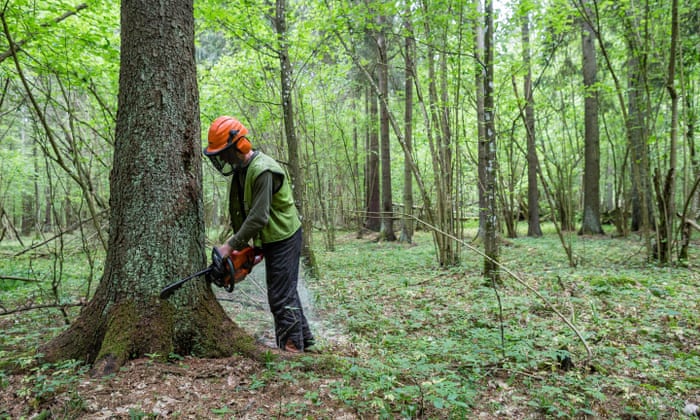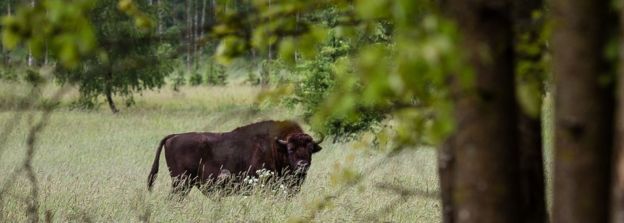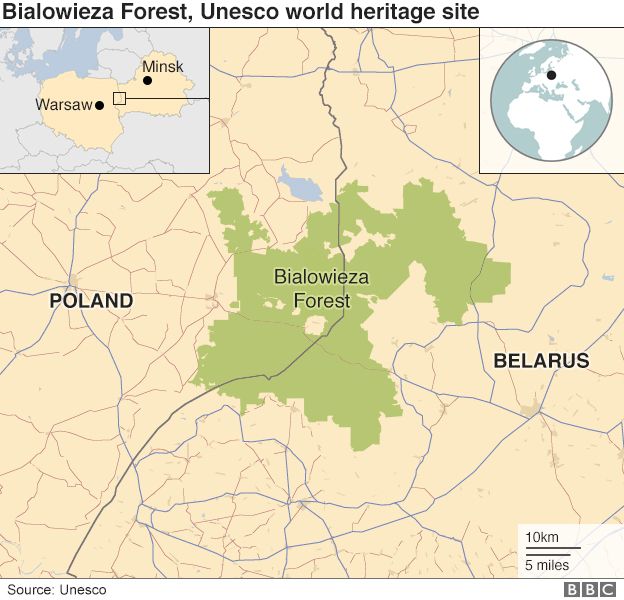Threat to a Primeval Forest
"The bark beetle has been a part of the ecosystem for hundreds of years."
"This phenomenon is a natural adaptation to the new climate situation."
"All the time, there is a worry that they will start logging again."
Adam Bohdan, biologist, Wild Poland Foundation
"Poland will respect the verdict [of the EU’s highest court ruling in 2018 that logging in the UNESCO-protected Białowieża forest, permitted by the Polish government, is illegal]."
"The Białowieża forest is our national heritage. All the activities have been undertaken with its preservation in the best possible condition for present and future generations in mind."
Henryk Kowalczyk, Poland's environment minister
"Białowieża has beautiful powers to regenerate itself – if it is left alone."
"If you plant new trees in logged parts of the natural forest, you risk turning it into a managed wood, and we have more than enough of those in Poland."
Kasia Jagiełło, Greenpeace, Poland
"This is a huge victory for all defenders of Białowieża forest."
"Hundreds of people were heavily engaged in saving this unique, ancient woodland from unthinkable destruction."
James Thornton, chief executive, green law firm ClientEarth
 |
| The ECJ has ruled that Poland’s decision to allow logging in the primeval Białowieża forest is illegal. Photograph: Wojtek Radwanski/AFP/Getty Images |
In this natural setting, hundreds of bird species make their home, and the ambiance is filled with their distinctive songs.
The forest is treasured for its wild state, as the home of thousands of ancient trees, one of Europe's last remaining primeval forests. It is linked to an ecosystem fairly untouched from the time pf the last Ice Age, when glaciers receded, over ten thousand years ago. A year ago, the European Court of Justice ordered that logging in the forest come to an end, as a clear threat to the forest, deemed a United Nations World Heritage site.
Heavy machinery used by loggers to cut down thousands of the forest's ancient trees have left gaping spaces in the forest canopy. And on the forest floor, tracks of the logging equipment left their signature deep gouges, scarring the forest, the palpable signature of logging operations where none should have been permitted.
But loggers were given clear permission to proceed with logging by the country's governing Law and Justice party which chose to ignore the EU order to cease and desist initially, but changed tack when it faced a fine of about $124,000 (100,000 euros) for each day the directive was violated. Environmentalists are concerned now that Warsaw plans to increase the wood quota for hundreds of square kilometers outside the boundaries of the forest.
 |
| The forest is home to Europe's largest herd of nearly extinct bison AFP |
The protected part of the Bialowieza woodland had been left intact, unlike many of the Continent's other ancient forests, many of which were razed. Others of their kind were transformed into cultivated versions of the ancient forests they once were, to reflect intense control, imposing on the old growth forests that failed to be protected, a neat, nursery-like presence, quite unlike their natural state.
In its natural state, the forest floor is strewn with fallen trees, common to a climax forest, which enriches the humus of the forest floor by gradual decomposition where thousands of species of insects and fungi do their work, feeding on rotting foliage and branches to help ultimately produce new life from the nutrients absorbed by the forest floor, to nurture new growth.
"There is more life in a dead spruce than a living one", commented Rafal Kowalczyk, head of the Mammal Research Institute at the Polish Academy of Sciences, recently touring Bialowieza Forest.

The latest pretext for government to once again permit logging in the ancient forest preserve, is the presence of the hairy little bark beetle. The male beetle bores into the spruce trees, and a chamber is created. When the male mates with several females, they deposit dozens of eggs in the chamber where the resulting larvae feed on the vascular tissue of the tree, which often dies.
An increase of the presence of the beetles has been brought about by climate change, with warmer winters failing to destroy many of the beetles, as occurred in the past. The infestation was seen to be devastating large tree tracts in the forest. Many environmental scientists felt the best course of action would be to allow nature to take its course.
The Polish government, however, ordered a large-scale logging campaign in 2016. New logging orders in the heritage forest impelled thousands of protesters to descend on the forest to form human blockades in hopes of stopping the logging machinery. The protests failed to convince the government of Poland to cease logging operations.
Only when the European Union stepped in to use its legal heft on a member state of the EU did the government back down, responding to threats of financial penalties should the logging not cease. Nature has stepped in as she always does, replacing new life in the absence of the oldt. The problem with the bark beetles is relevant enough, yet no easy solutions have presented themselves.
 |
| Author: Frédéric Demeuse |
Labels: Bialowieza Forest, European Union, Logging, Poland, UNESCO

0 Comments:
Post a Comment
<< Home